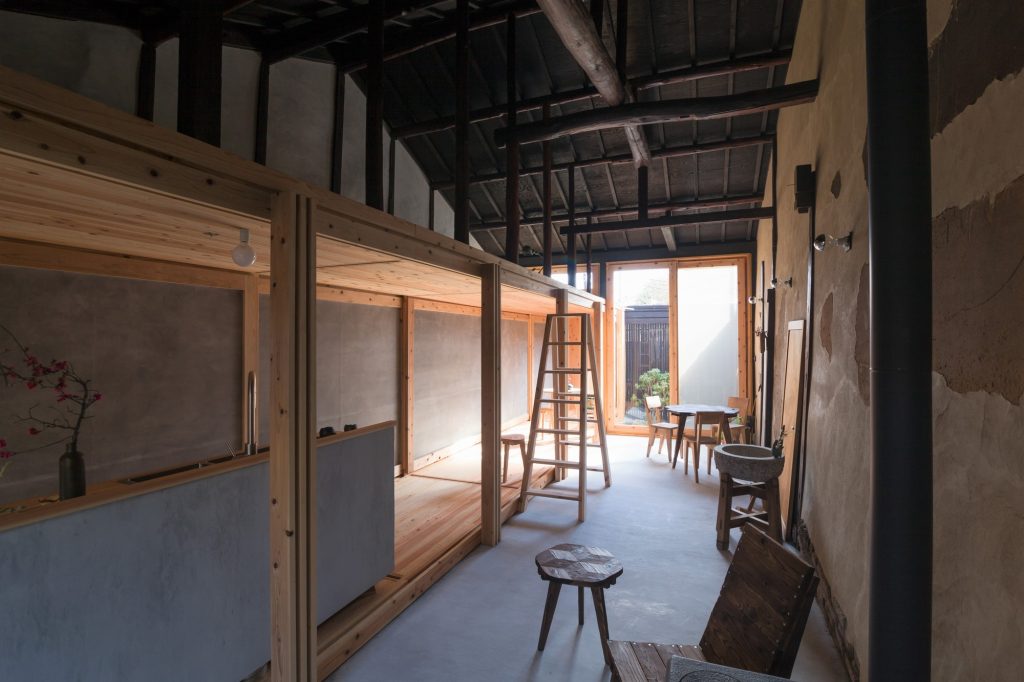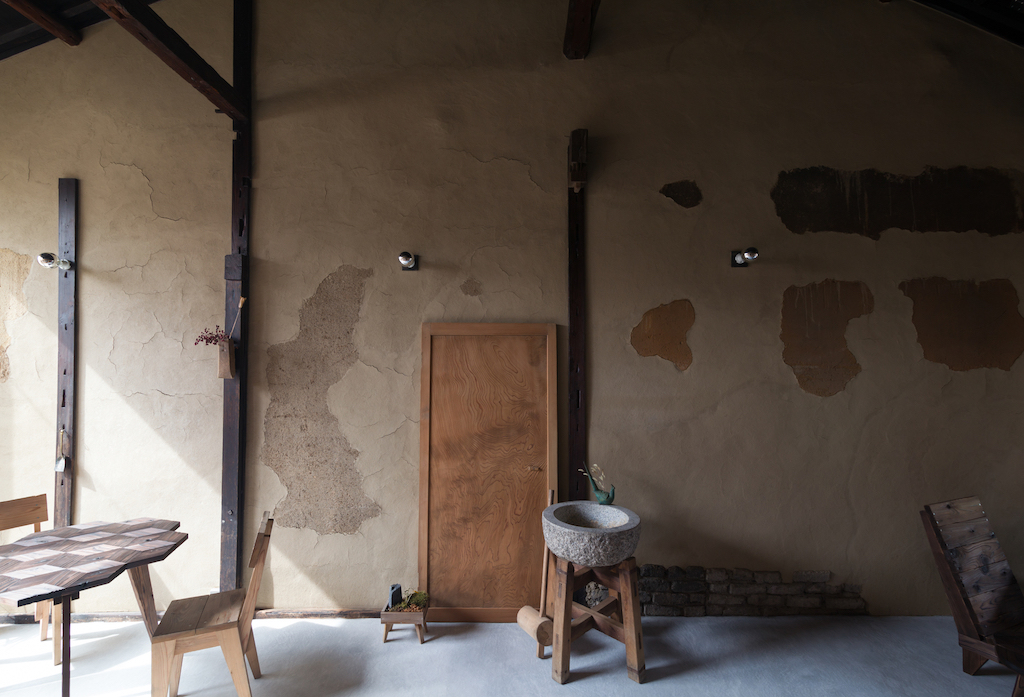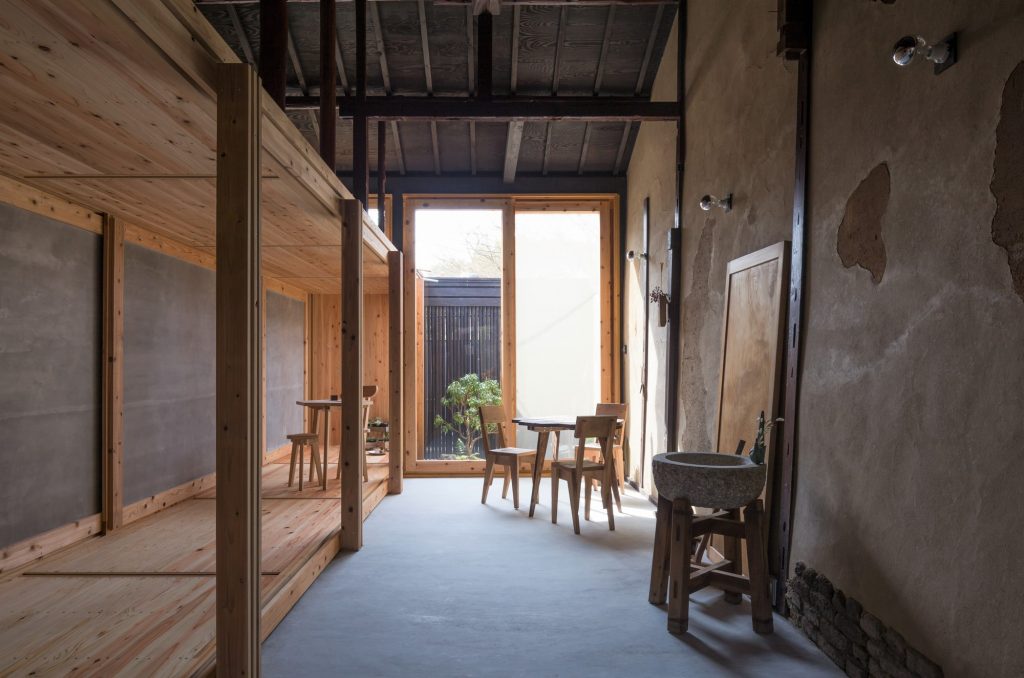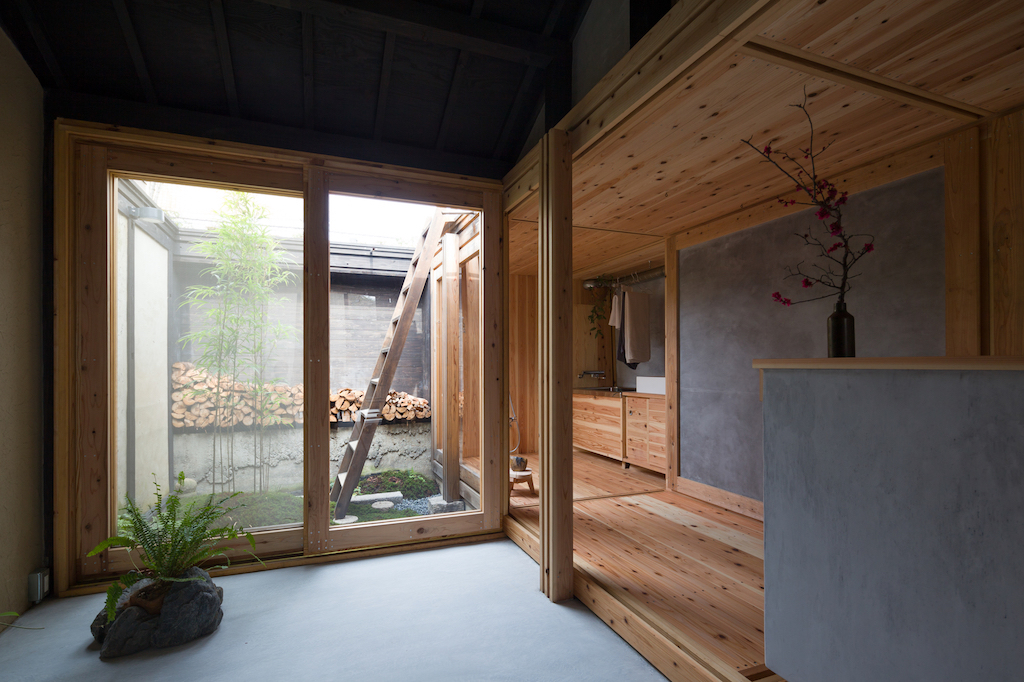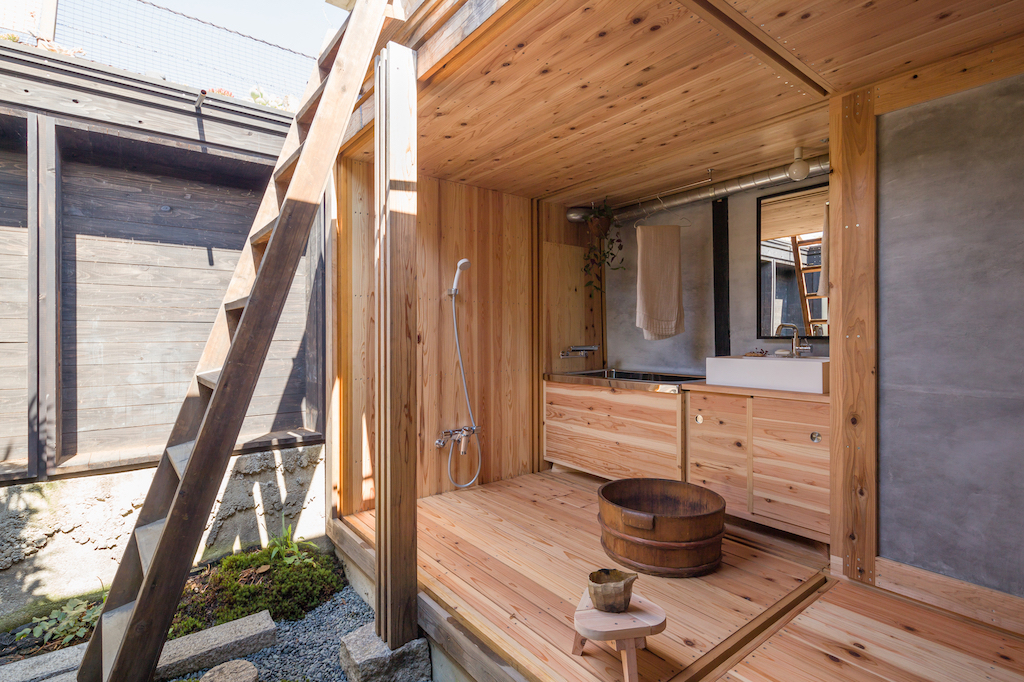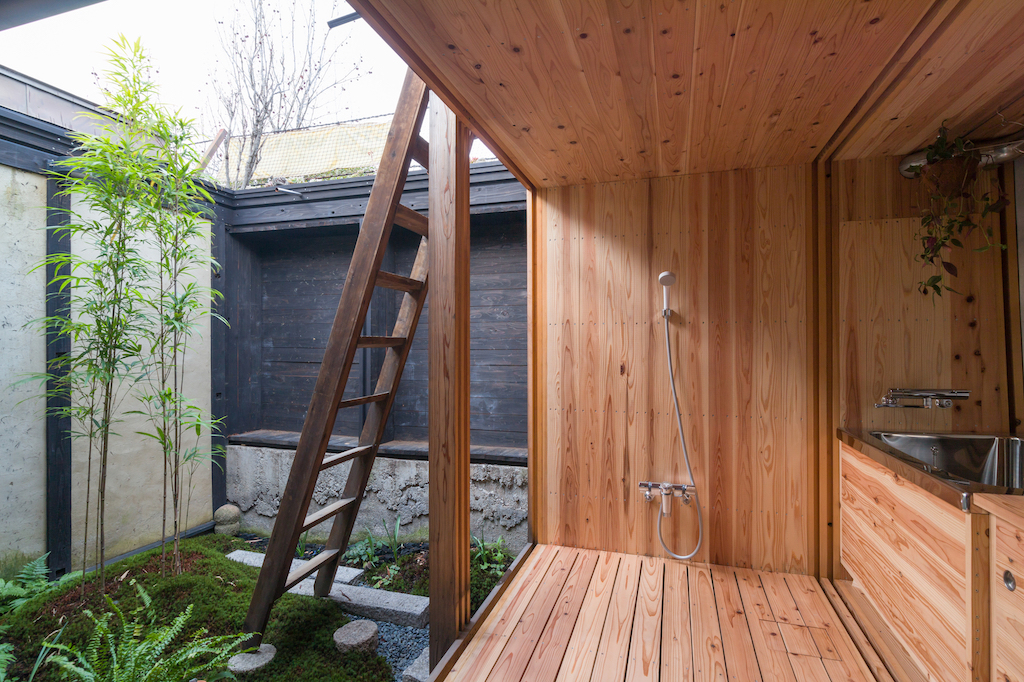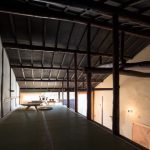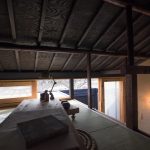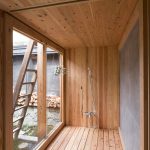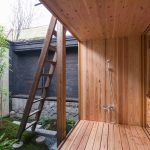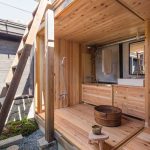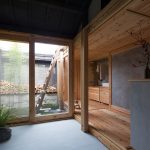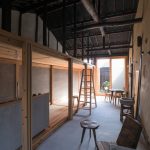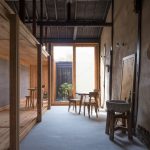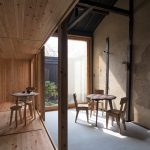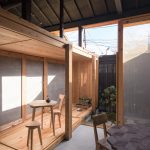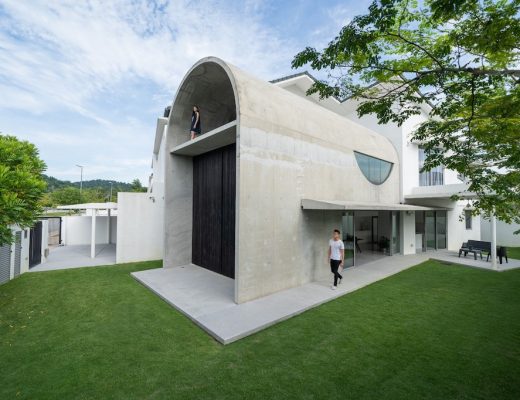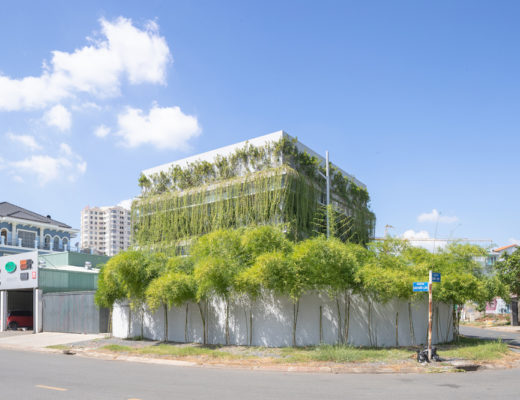Kyoto-based founders of 2M26 multidisciplinary studio Mélanie Heresbach and Sébastien Renauld have designed and built a multi-functional property that serves as their home, office, woodworking atelier and event space.
The architect-artist duo renovated a 100-year-old Kyoto nagaya (traditional Japanese row house). Nagaya houses were primarily built as living quarters for the working class such as craftsmen, storekeepers, labourers and were structurally connected to each other by clay walls, often supporting a common roof system.
In order to preserve the soul of the house, the practice paid great attention to its original typology, structure, and use of materials. After having been left in a state of neglect for a few years, the main walls and roof structure were severely damaged and had to be fixed first. A new wooden structure was then built to reinforce the base of the house and offer more possibilities of space and circulation.
This narrow strip of land – 60m² – is located within a quiet residential area and surrounded by a local park. The un-built south and north directions of the neighbourhood allowed the house to be open to its surroundings and breathe in the hot summer air. This gave the possibility to generate spaces in direct contact with surrounding gardens and for the flow and quality of indoor air to be renewed. The architects aimed at taking advantage of this situation, with the desire to see the sky from inside the house and receive direct natural light.
Following these starting points and inspired by traditional Japanese Nagaya planning, the duo organised the reconstruction of the space in two main parts using the original length of the house as a guide. From end to end the house stands open at full height with courtyard gardens on either sides, allowing the main beam complex of the roof to be revealed and visible throughout the entirety of the space. This open hallway is a direct reference to the Japanese doma – the space between indoors and outdoors – including a wood-burning stove and the distribution of the new wooden structure.
The new wooden structure built into and extended out of the original structure of the house reaches the limits of the land and provides two stories inside and outside the house. The ground floor houses all equipment while an additional second floor displays an open tatami space for a bedroom and office use with access to the outside. Both the levels open out to roof terraces and small gardens.
You might also like:
Hearth Architects designs wooden house with two separate delta roofs in Japan’s Koga-shi town
Tent-shaped wooden house in forest by Hiroshi Nakamura & Nap harks back to ancient Japanese living
2m26 wanted this 48m² house to be a space able to welcome events, exhibitions, or art performances rather than a private home used for only living and working activities. All equipment and personal items should be able to disappear. This intention was translated by creating a long storage space on one side of the structure of the ground floor which would house all facilities such as the toilet, atelier, kitchen, dressing, and bathroom. This space could be closed and concealed by sliding doors allowing, as a result, a continuous space to be generated. While the background of the space is able to transform and change according to its use, both the bathroom and entrance can be fully opened to gardens, giving new perceptions of the interior space.
Having consulted the local craftsmen, 2m26 incorporated the use of traditional Japanese techniques together with their own way of building. The process of renovation greatly influenced the way in which the original materials of the house were to be reused and repurposed. Damaged and no longer usable timber was burnt onsite in the wood-fire stove to provide hot air in the winter and a large amount of clay from the old roof and walls were kept, sieved and reused to fix the main walls. The new timber structure and furniture were built using locally sourced cedar from a wood factory located in the centre of Kyoto and plaster lime was coated on the sliding doors of the equipped storage. The made-to-measure natural base tatamis on the second floor were created by a skilled Kyoto-based craftsman, Yokoyama-san.
By sitting on the tatami, wooden furniture, walking on the cedar, and dancing on the stone polished hallway ground, the finished space enables multiple impressions and points of view to be expressed and experienced. The tall sliding glass doors at both entrance and rear allow the changing sunlight to enter through this tiny house creating a different experience each time.
See the full image gallery here:
Photos: soukousha (Yuya Miki)



